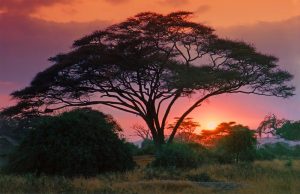Understanding the Risks of Climbing Kilimanjaro
Climbing Mount Kilimanjaro, the highest peak in Africa, is a dream for many adventurers. However, it is essential to understand the risks involved in such a challenging endeavor. While Kilimanjaro is a non-technical climb, meaning that it does not require any specialized climbing skills, it is still a physically demanding and potentially dangerous undertaking.
One of the main risks associated with climbing Kilimanjaro is altitude sickness. As you ascend to the summit, the air becomes thinner, leading to a decrease in oxygen levels. This can cause symptoms such as headache, nausea, fatigue, and dizziness. In severe cases, altitude sickness can lead to potentially life-threatening conditions such as pulmonary or cerebral edema. It is crucial to acclimatize properly and listen to your guide’s advice to minimize the risk of altitude-related illnesses.
Weather conditions on Kilimanjaro can also pose a risk to climbers. The mountain’s proximity to the equator means that weather conditions can change rapidly, leading to extreme temperature variations, heavy rainfall, or even snowfall. It is essential to be prepared for all types of weather and ensure that you have the appropriate gear to stay warm and dry.
Lastly, the rugged terrain of Kilimanjaro can also be a risk factor. The steep slopes, loose rocks, and narrow paths can make hiking challenging, especially in adverse weather conditions. It is crucial to have a good level of physical fitness and to be prepared for long days of hiking in challenging terrain.
Factors to Consider Before Summiting Kilimanjaro
Before embarking on your journey to summit Kilimanjaro, there are several factors to consider to ensure a safe and successful climb.
First and foremost, it is essential to choose a reputable tour operator for your climb. Sunset Africa Safari is a well-established and experienced tour operator that offers guided Kilimanjaro climbs. Their knowledgeable guides and support staff will ensure that you have a safe and enjoyable experience on the mountain. To book your climb with Sunset Africa Safari, please contact info@sunsetafricasafari.com.
Secondly, it is crucial to be physically prepared for the climb. Training for endurance, strength, and cardiovascular fitness will help you tackle the physical challenges of climbing Kilimanjaro. It is also important to pack the right gear, including proper clothing, hiking boots, and a good-quality sleeping bag.
Acclimatization is another key factor to consider before summiting Kilimanjaro. Taking your time to ascend slowly and allowing your body to adjust to the altitude will help prevent altitude sickness and increase your chances of reaching the summit.
In conclusion, climbing Kilimanjaro is undoubtedly a challenging and potentially risky endeavor. However, with proper preparation, guidance, and caution, the risks can be minimized, and the rewards of standing on Africa’s highest peak can be fully enjoyed. If you are considering climbing Kilimanjaro, be sure to take the necessary precautions and plan carefully to ensure a safe and successful climb.


